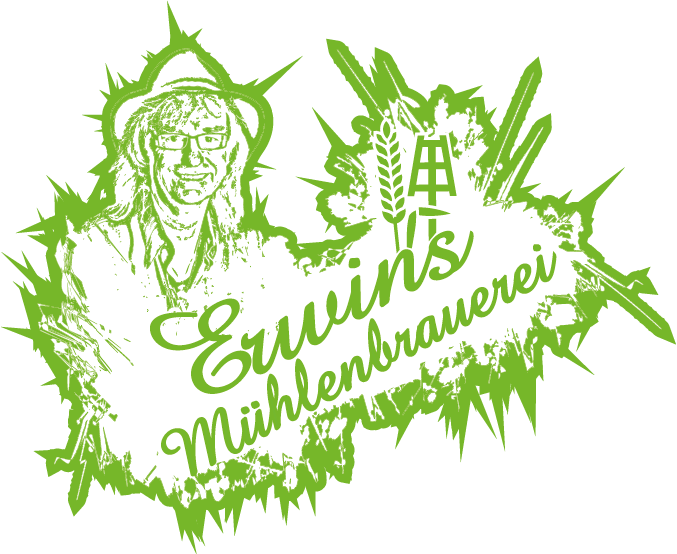The brewery
The mill brewery
The "birthplace" of Erwin's Mühlenbier
Welcome to the historic brewery on the site of the historic watermill in the idyllic village of Birgel in the Vulkaneifel – the birthplace of Erwin’s Mühlenbier.
The plant in Birgel works like a classic Schöpf brewery, where beer is produced using only the hands of the master brewer and his employees – just like the monks did around 150 years ago. The brewing plant is the last extension to the historic mill site for the time being and was realized by the head miller himself according to old conditions and with his own ideas.
In his brewing plant, he completely dispenses with electricity and all electronics. It is brewed as it used to be in the monasteries. There is no agitator, there are no pumps. The system is fired with wood. The water is heated to 78 degrees Celsius during the brewing process.
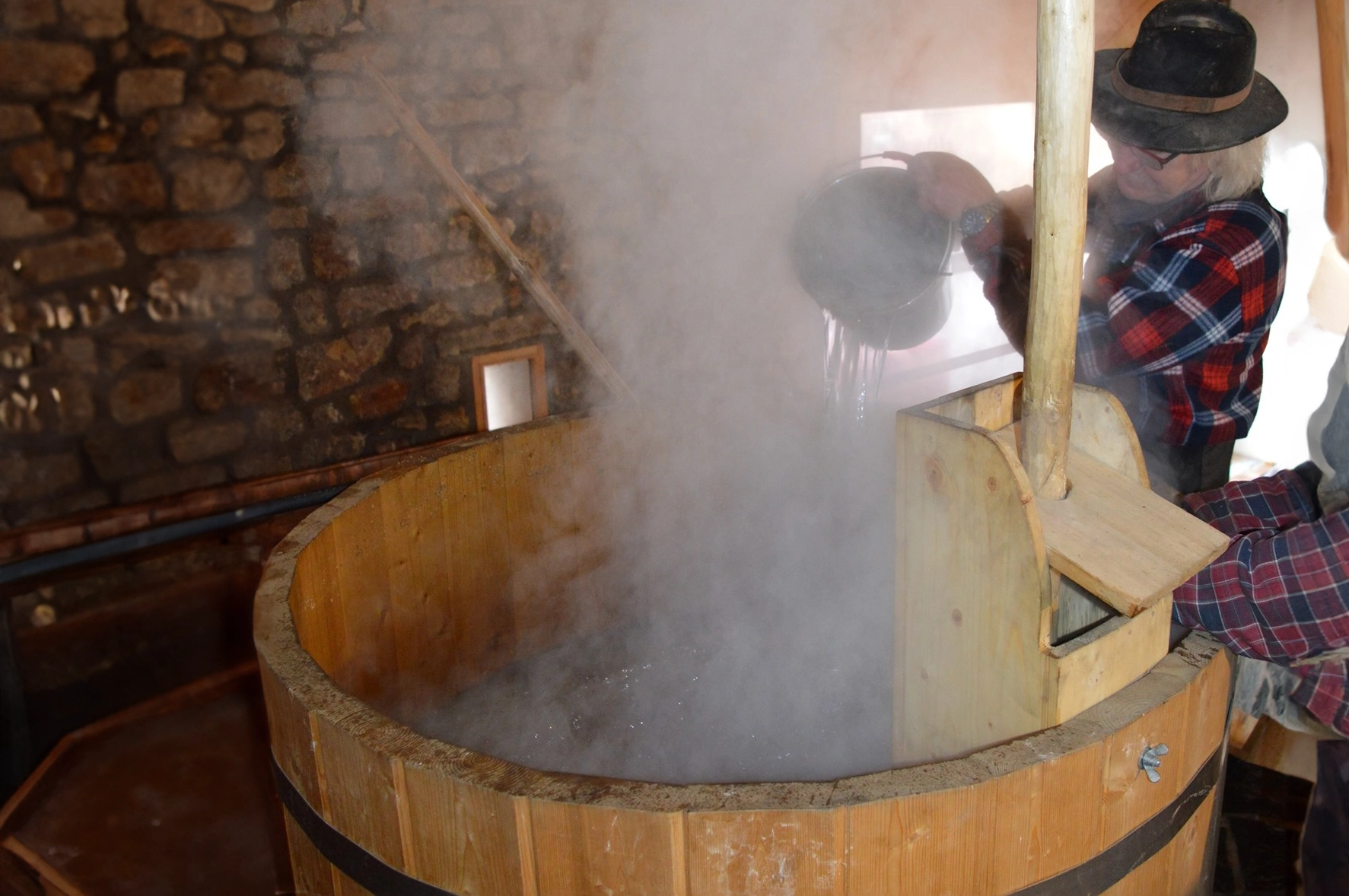
Regional ingredients
The "4" for beer: hops, malt, yeast and water
The best regional ingredients guarantee the exceptional quality and incomparable taste of the two mill beers: the pale ale and the wheat beer. In 1516, the German Purity Law stipulated what the raw materials of beer could be: barley, hops and water. The yeast was added later. Two types of hops are used in brewing: aroma hops and bittering hops. There are only five major hop-growing regions in Germany.
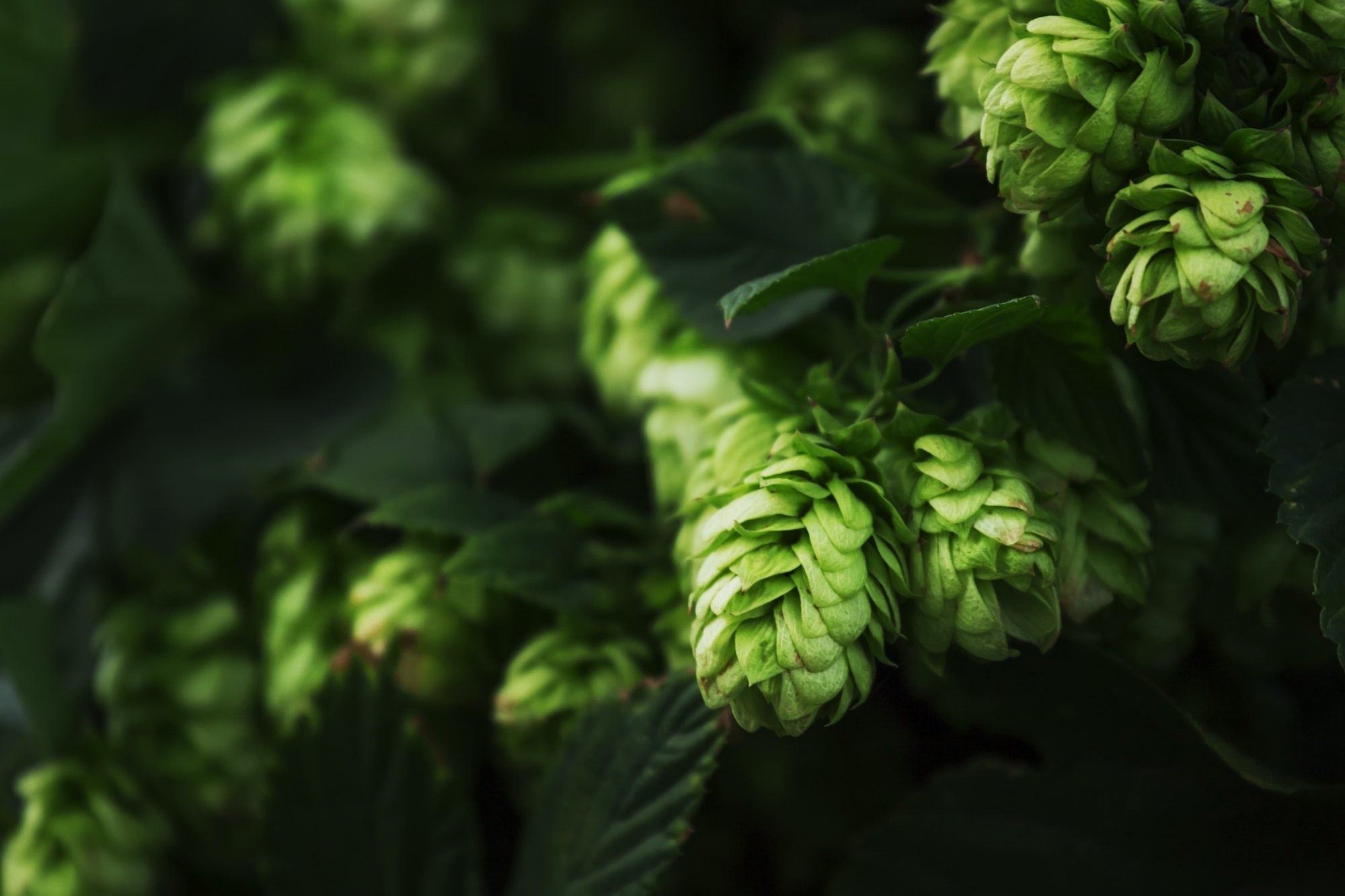
The hop cones give Erwin's Mühlenbier its incomparable taste, which the master brewer in Birgel refines even further by hopping it three times. The hops also naturally ensure the durability and stability of the foam.
Malt is originally a grain. Either barley, if it is to be a pale beer. Or wheat, if, as the name suggests, it is to be a wheat beer. The grain is made to germinate by adding liquid, which then causes protein enzymes to form in the grain. Malting turns the grain into brewing malt.
A fine Mühlenbier consists of 92 percent water. From this it is easy to deduce how important the quality of the water is for the quality of the mill beers. Given the quality of the water in the springs of the Volcanic Eifel, we are not surprised by the high quality of the Mühlenbier. But as the head miller Erwin humorously observed, "water only tastes good when it has been in the mill brewery." Without the high art of brewing and the exquisite ingredients, even the best Vulkaneifel water would be just water.
After boiling the wort and cooling it down, the yeast is added. The addition of yeast to the wort initiates the fermentation process. Now the conversion of the sugar into alcohol begins. This is the "birth" of the percentage by volume, which is used to measure the alcohol content of beer.
Procedure of the brewing process
Six steps to Eifel beer enjoyment
Everyone involved in the brewing process, whether master brewer or the various ingredients, plays an important role. The better the interaction between all “participants”, the better the end product. If you want to know what such a perfect “togetherness” can taste like, then you should enjoy one of our mill beers.
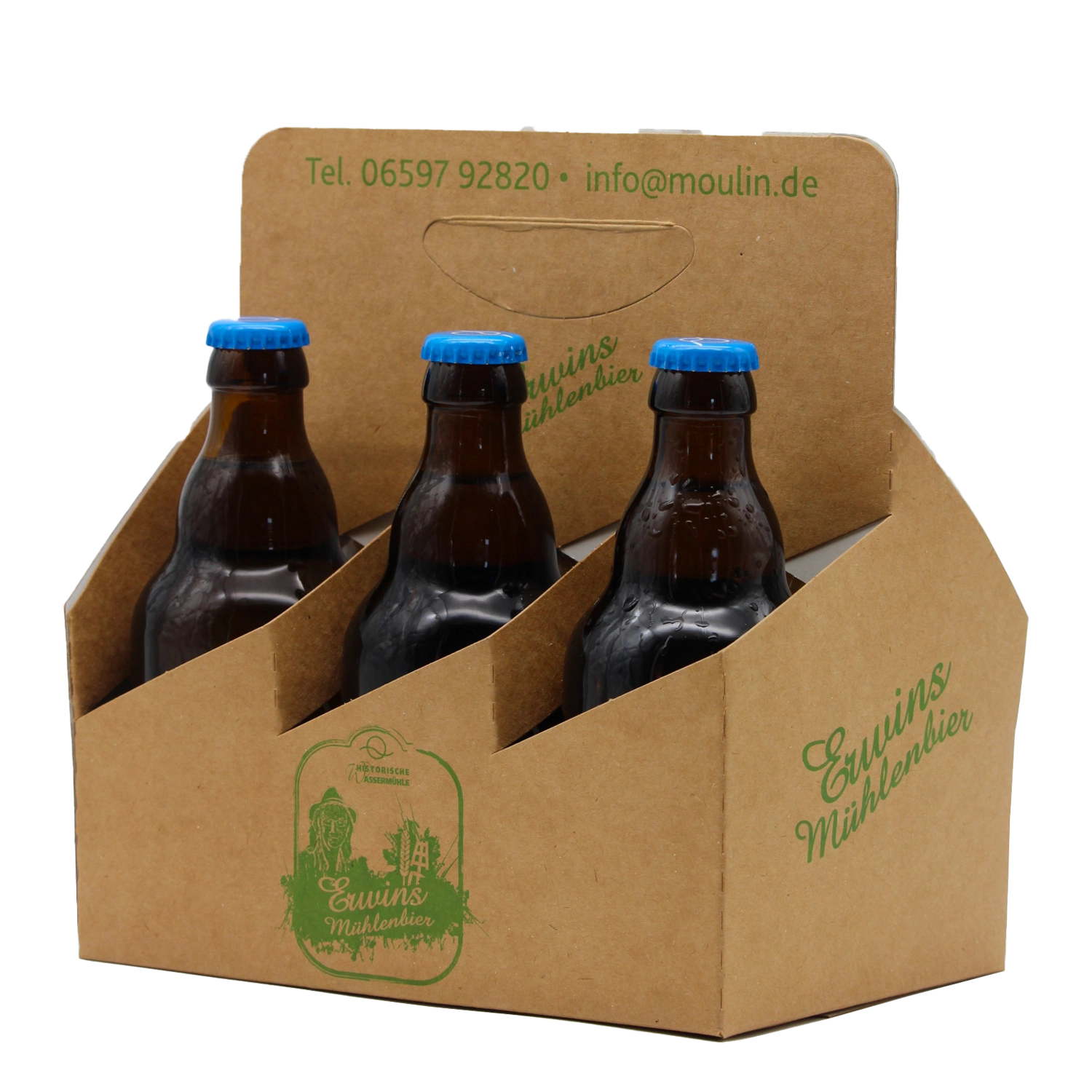
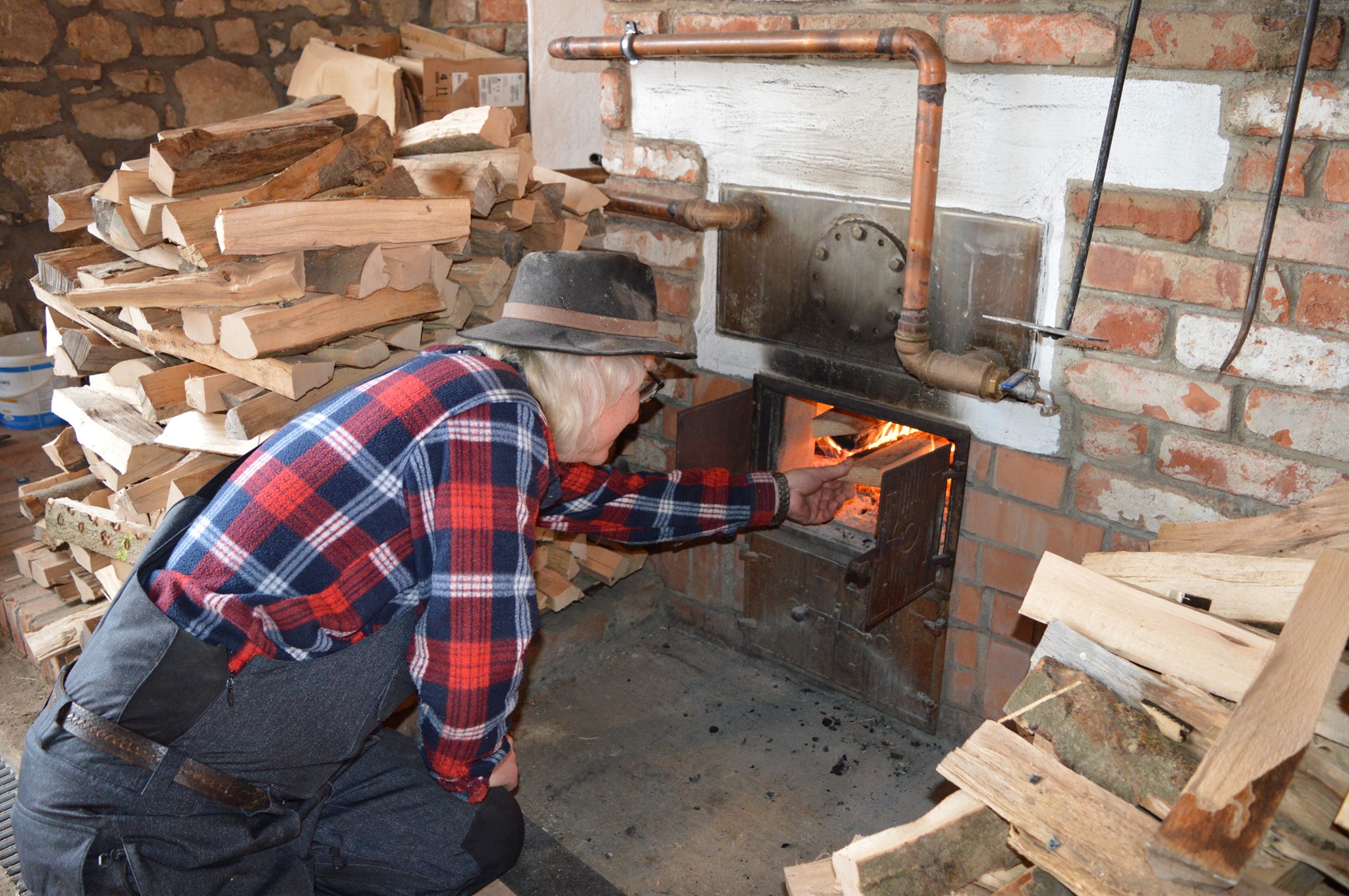
Step 1: Mashing
The brewing process starts with mashing. Depending on the type of beer, different types of malt are mashed in water. The mash then passes through various temperature stages in order to saccharify the protein present in the malt. This is because only sugar is required for brewing in order to obtain a clear wort. After mashing, the mash is then scooped into the lauter tun by hand using ladles.
Step 2: Lautering
The following then happens in the lauter tun: the solid components of the mash are separated from the liquid, the so-called wort. The wort is then skimmed off and returned to the brewing kettle. During this lautering process, the previously heated hot water is needed to completely desugar the mash with the liquid and achieve the highest possible original gravity.
Step 3: Boiling and hopping
When the lautering process is complete and the brewing kettle is filled with the wort, the wort is brought to the boil. Now the brewing process begins, during which the taste of the beer is created. The hop cones are primarily responsible for the flavor notes of the final beer product. Depending on the composition of the hop varieties, this results in a rather bitter taste or a slightly spicy, mild taste. Hops are, so to speak, the natural “flavor enhancer” in the brewing process.
Step 4: Cooling
After hopping, the liquid wort is now cooled down in a large cooling vessel according to old tradition. The cooled wort is then pumped from there into a stainless steel tank in compliance with the strictest hygiene guidelines. The wort is then mixed with the yeast here.
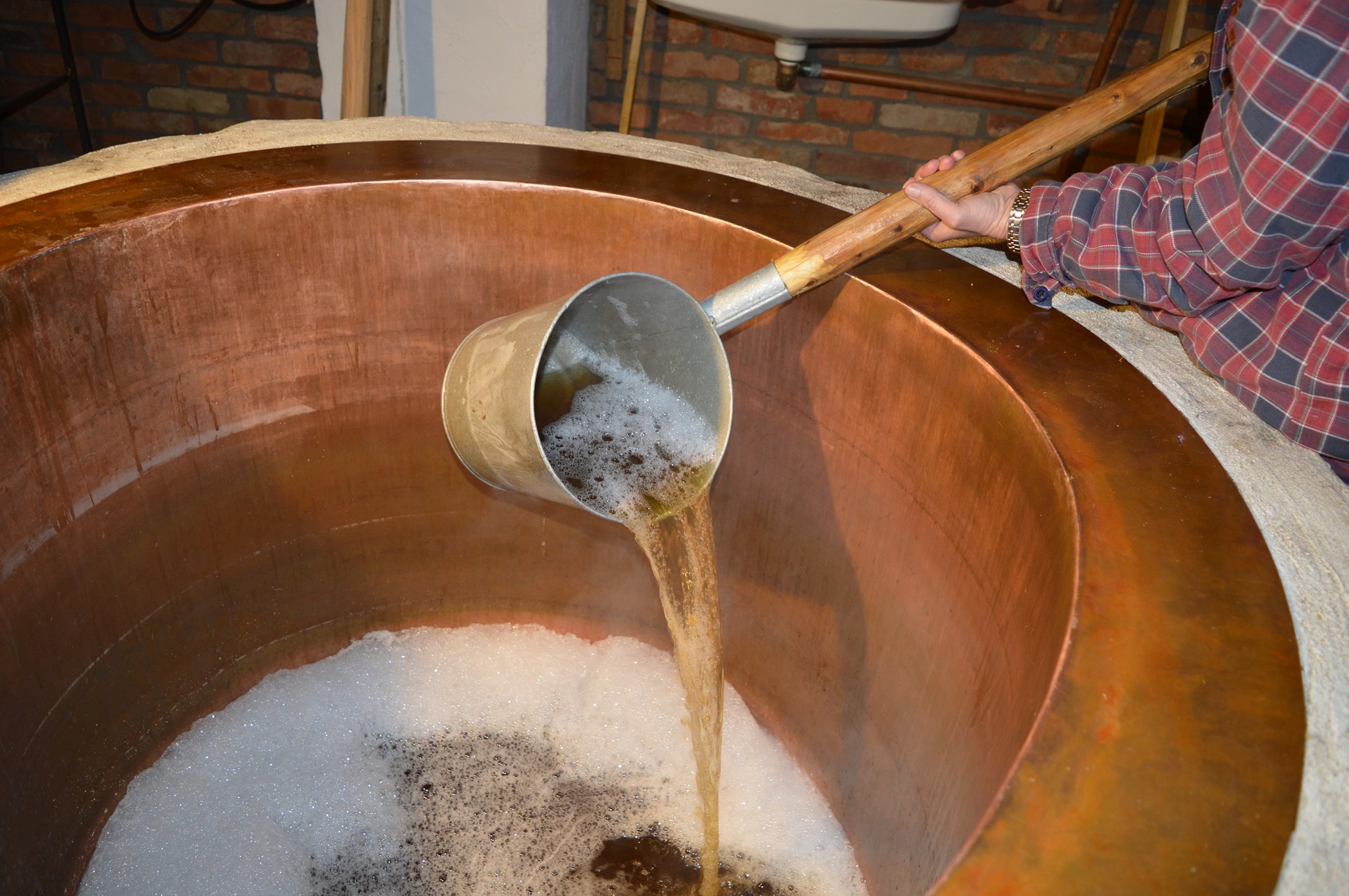
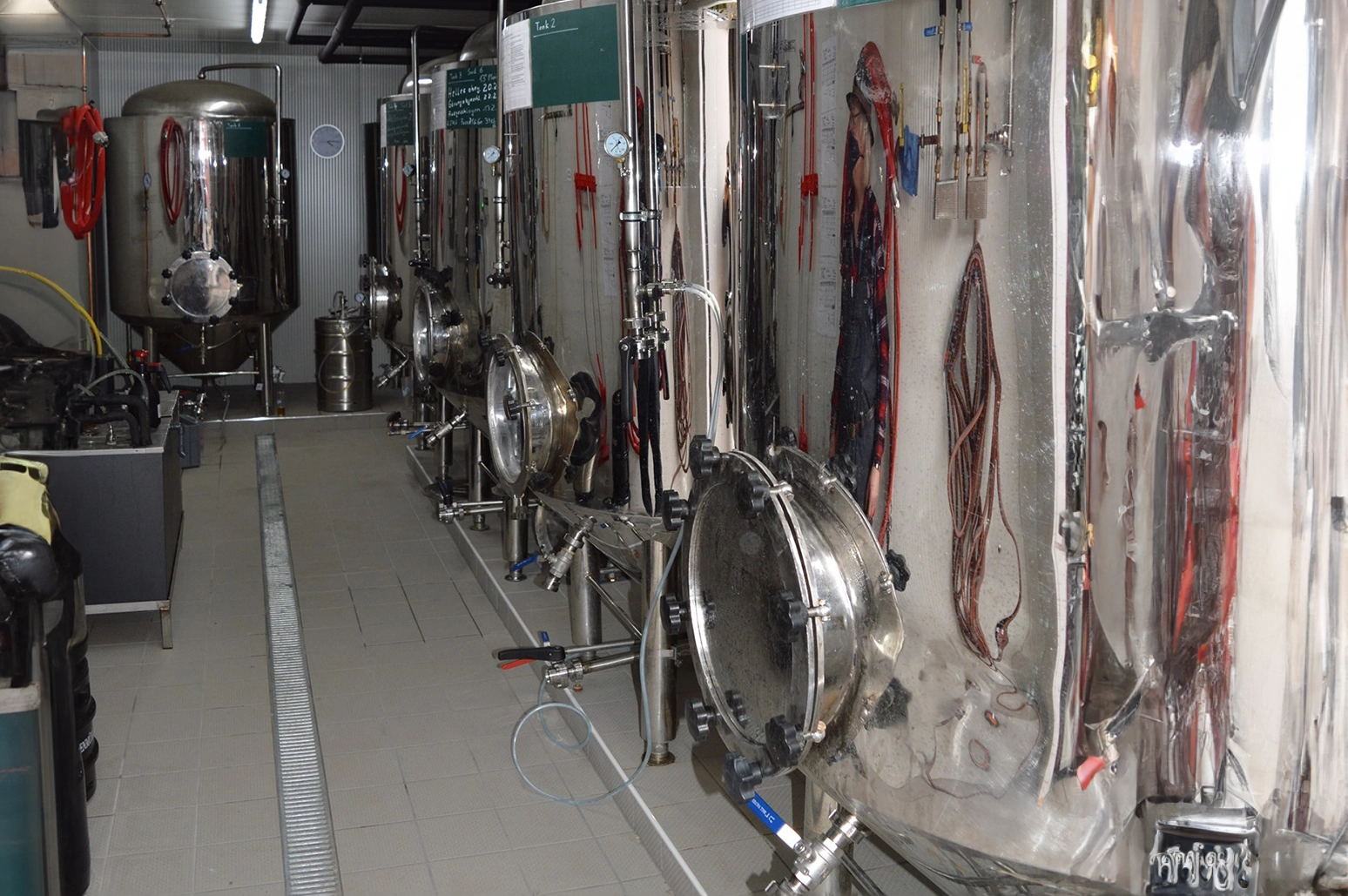
Step 5: Fermentation
Now the fermentation process can begin. Fermentation takes around three to five days. After the fermentation process, the brewing process is complete and the freshly brewed beer is hopefully full of flavor and drinkable. Only then will the fresh brew be labeled “Erwin’s mill beer”!
Step 6: Filling
Now the beer can either remain in the tanks. Or it is filled into barrels or individual bottles for serving. Filling, corking and cleaning the beer bottles is all done manually at the Mühlenbrauerei. There are no automated filling lines at the brewery in Birgel.
A look back
The history of the brewery
Traditional craft beer brewing like 150 years ago
The lockdown during the pandemic was the starting signal for this small traditional brewery. The head miller Erwin suddenly had 14 hours a day in which to think, but also to implement his decision together with a helper in record-breaking time.
He tried out the various recipes in an old 80-liter sausage kettle until he finally discovered that three hops gave the beer he brewed the unmistakable taste of mill beer.
The head miller Erwin has fulfilled a heartfelt wish with the construction of the brewing plant. With the brewing plant he planned and developed himself, he wanted to revive a relic of the monastic art of brewing from times long past and also produce a wonderfully drinkable mill beer using the best raw materials.
If you would like to know whether he succeeded, you can find out
here
order a pale Mühlenbier or an Erwins Mühlenweizen and have it sent to your home.
Cheers then!”
